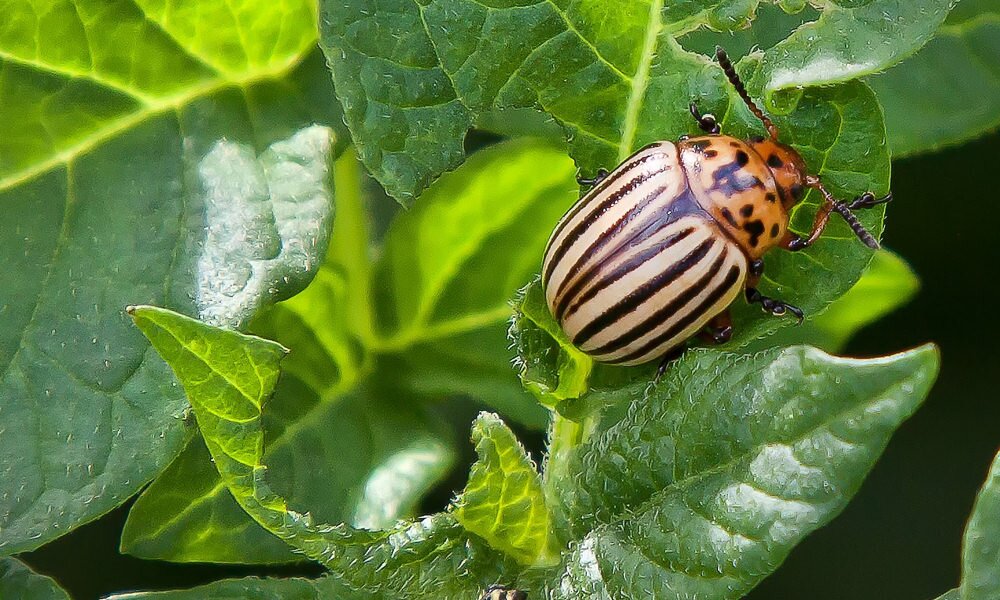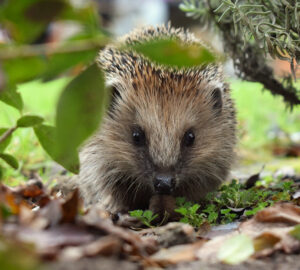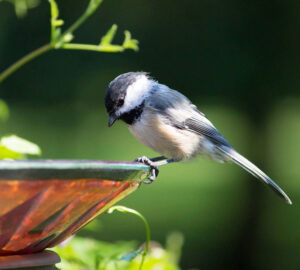The Colorado potato beetle (Leptinotarsa decemlineata) – a notorious pest – wreaks havoc on potato plants and other members of the Solanaceae family. With its distinctive yellow-and-black striped back and voracious appetite, this beetle can devastate crops in a matter of days. Here are the most effective ways to identify, prevent, and control this persistent garden threat.
What Does the Colorado Potato Beetle Look Like?
Adult beetles are about 10 mm long with rounded, convex bodies. They are yellow-orange with ten characteristic black stripes running down their elytra (wing covers). The larvae are reddish-orange, hump-backed, and soft-bodied with rows of black dots on their sides. Both life stages feed on foliage and are highly destructive.
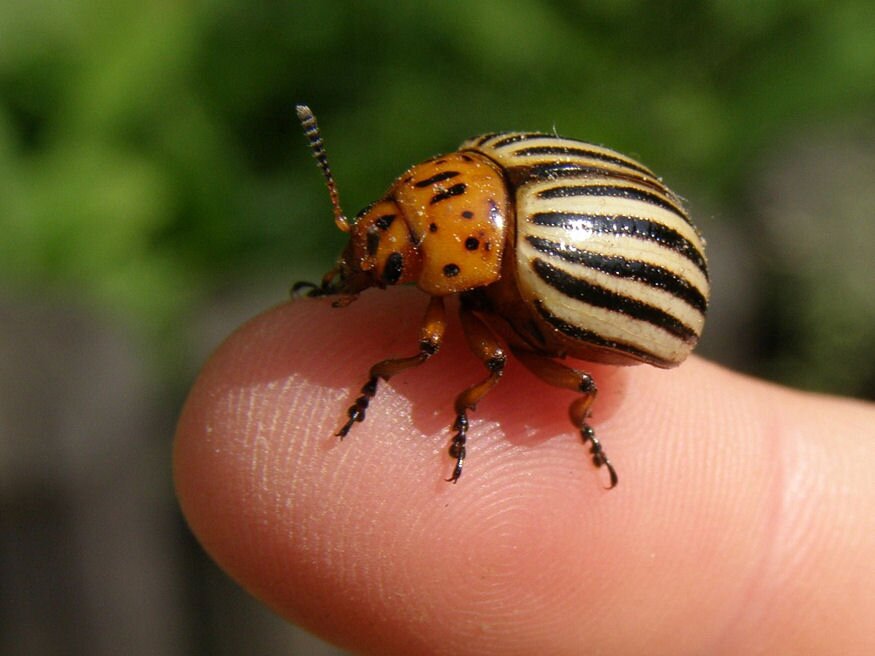
Plants Most Affected by This Pest
While potatoes are their main target, Colorado potato beetles also feed on tomatoes, eggplants, and peppers. Left unchecked, they can defoliate entire plants, significantly reducing yields or even killing the plant entirely.
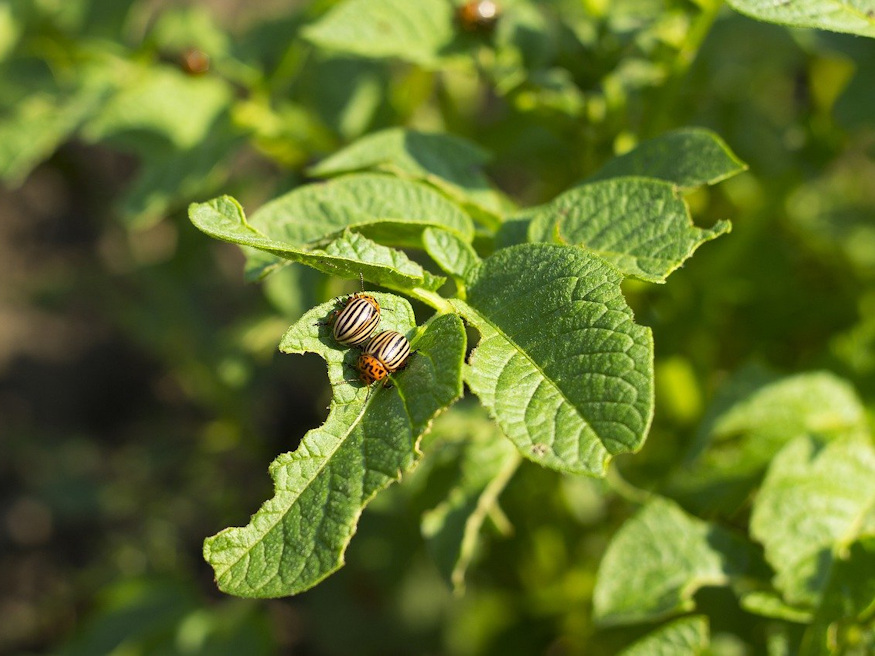
Global Spread and Resistance
Native to North America, the beetle has spread throughout Europe and Asia. There have been isolated detections in Australia and New Zealand, but it is not considered established in those regions. This pest is notorious for developing resistance to chemical insecticides, making integrated and mechanical control methods even more important.
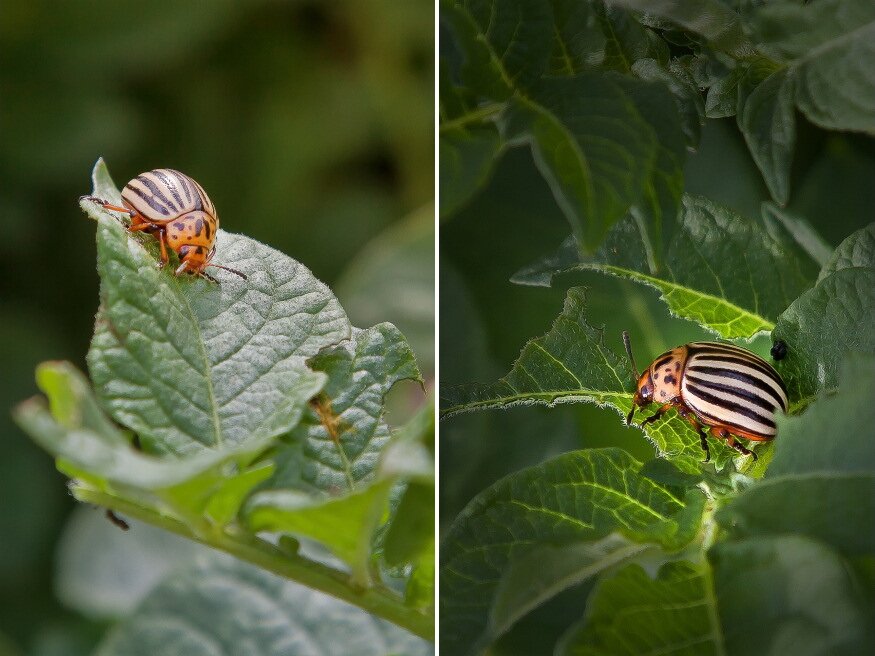
Recognizing the Damage
Feeding damage is typically seen as large holes in leaves, eventually leading to complete defoliation. Eggs are laid in clusters on the undersides of leaves and hatch into larvae that feed aggressively before pupating in the soil.
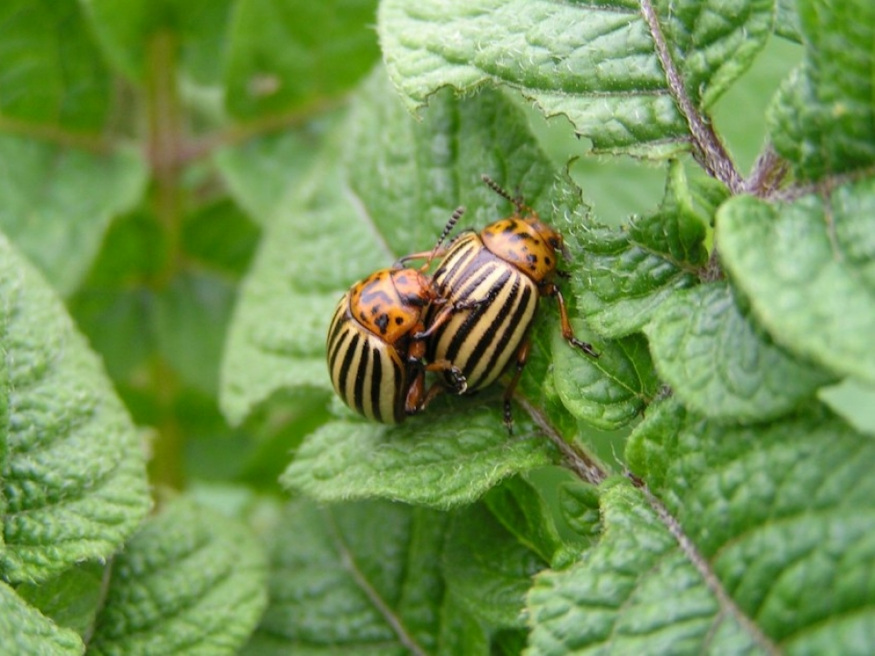
Prevention and Control Strategies
Manual Removal
Hand-pick and squash adult beetles and larvae, especially during early infestations. Check the undersides of leaves regularly for eggs and remove them to interrupt the life cycle.
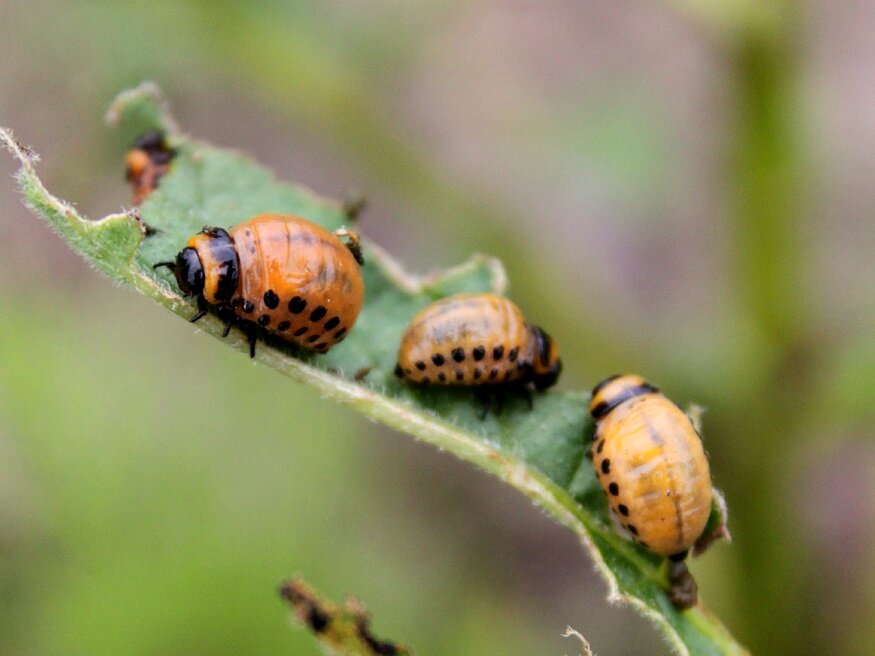
Crop Rotation
Avoid planting potatoes or other solanaceous crops in the same spot every year. Rotate with unrelated plants to disrupt the beetle’s breeding cycle.
Use of Row Covers
Floating row covers can prevent beetles from accessing young plants. Be sure to remove the covers during flowering to allow pollination.
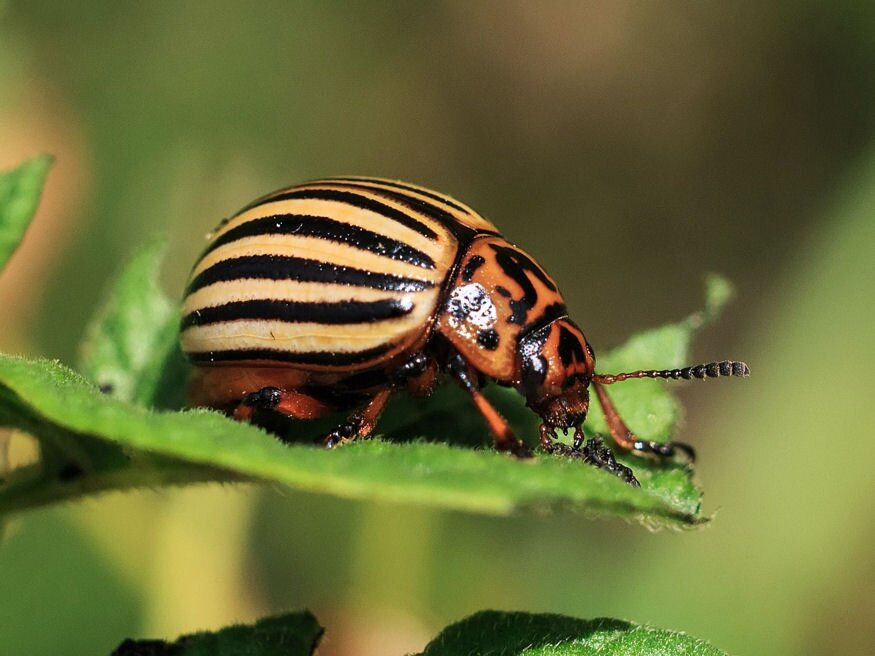
Neem Oil and Natural Sprays
Applying neem oil acts as both an insect deterrent and growth disruptor. Homemade garlic or chili sprays may also help reduce beetle populations.
Encourage Natural Predators
Ladybugs, lacewings, and certain predatory stink bugs can help control beetle larvae. Creating a biodiverse garden increases the likelihood of natural pest suppression.
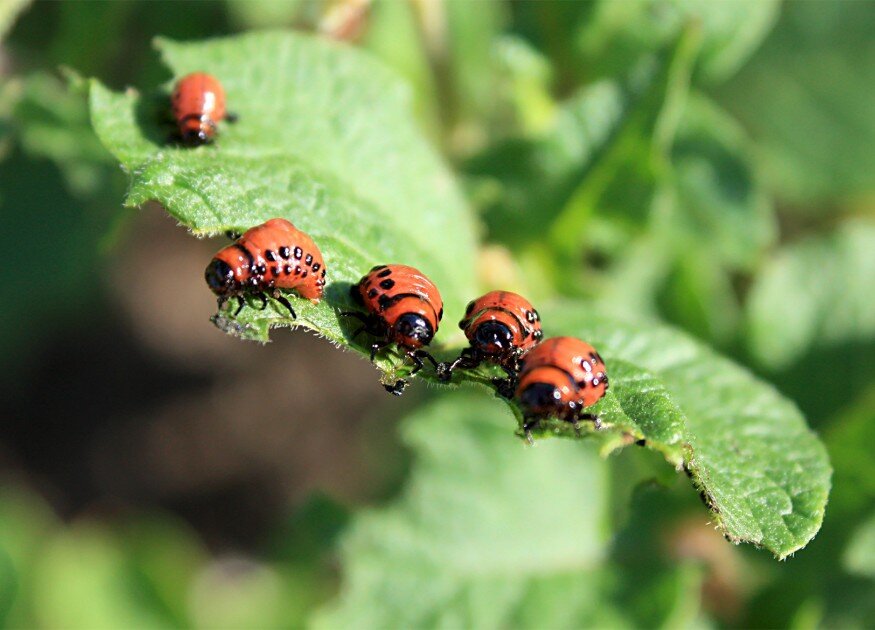
Companion Planting and Trap Crops
Coriander and tansy release compounds that may repel beetles. Nasturtiums act as trap crops by attracting the pests away from your main crop. For this method to be effective, it’s essential to monitor and manage the trap plants before beetles migrate back.
Integrated Pest Management (IPM)
A long-term strategy that combines cultural, mechanical, and biological controls. IPM focuses on monitoring, targeted interventions, and minimizing pesticide use to maintain a healthy garden ecosystem.
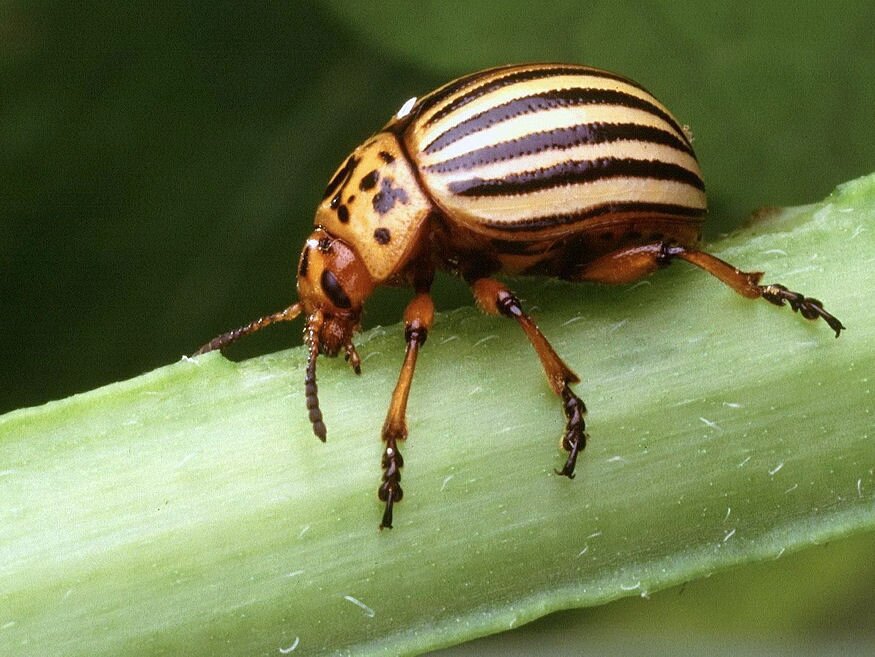
Stay Vigilant
Early detection is key. Inspect your garden regularly and act promptly when you see signs of beetle activity. Combining several control methods usually yields the best results.
With a smart, proactive approach, you can protect your vegetables from one of the most damaging garden pests without relying heavily on chemicals.



